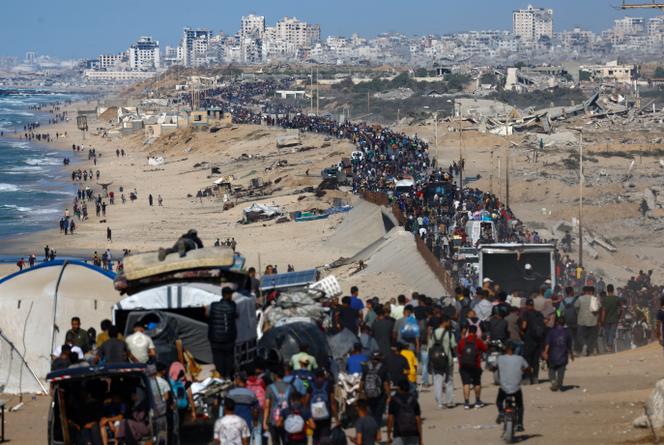


Ayman is a survivor. An engineer, he "never left" Gaza City throughout the whole two years of the war of annihilation that the Israeli military waged against the Palestinian enclave. The city is his home, and he lives in its western part, by the sea. "Joy" is what he said he felt on Friday, October 10, as the bombing ceased and thousands of displaced people flooded back into the city. "The streets are full of displaced people, coming back," he said with emotion in his voice, while the voices of children and car horns echoed in the background.
As soon as the Israeli military announced the start of the ceasefire, together with an initial withdrawal of its troops, crowds surged toward the territory's devastated north, forming dense columns. Previously, the flow of displaced people had gone in the opposite direction after a new offensive against the enclave's main urban center was launched by Israeli forces in August.
On Friday, the vast majority of returning Palestinians made the journey from the central and southern parts of the Gaza Strip on foot, often traveling empty-handed, sometimes with only meager belongings. By the early evening, as people continued to return after darkness fell, Gaza civil defense rescue workers reported that nearly 200,000 people had already made their way back to the Palestinian territory's north.
You have 80.38% of this article left to read. The rest is for subscribers only.
